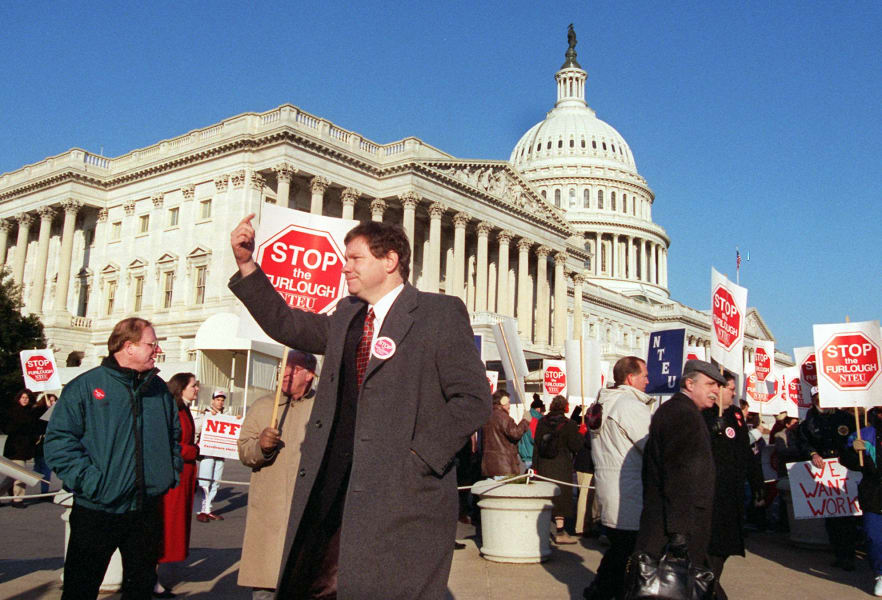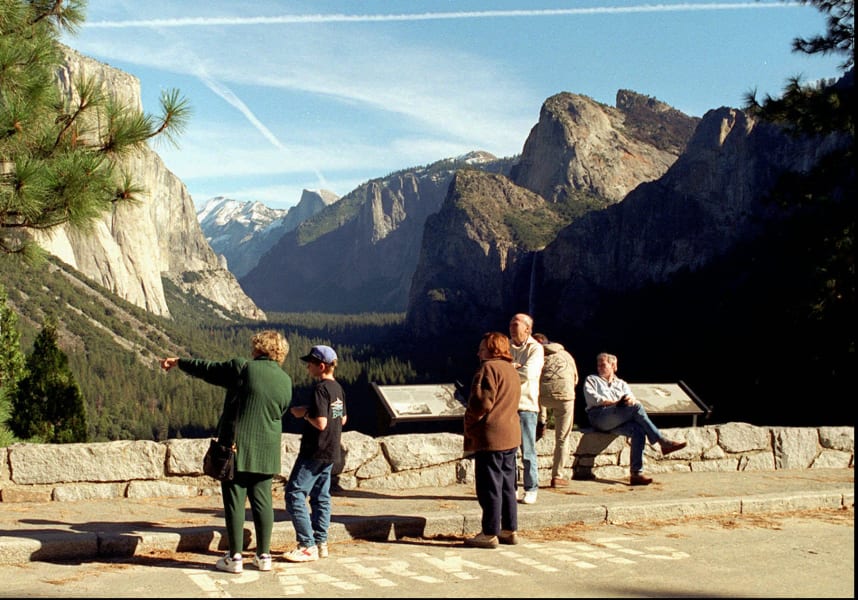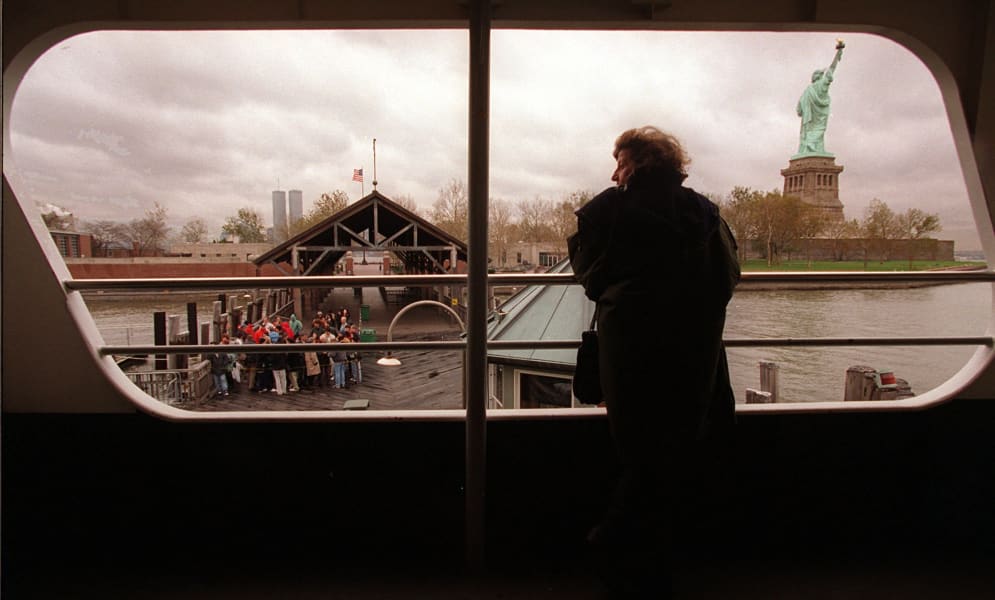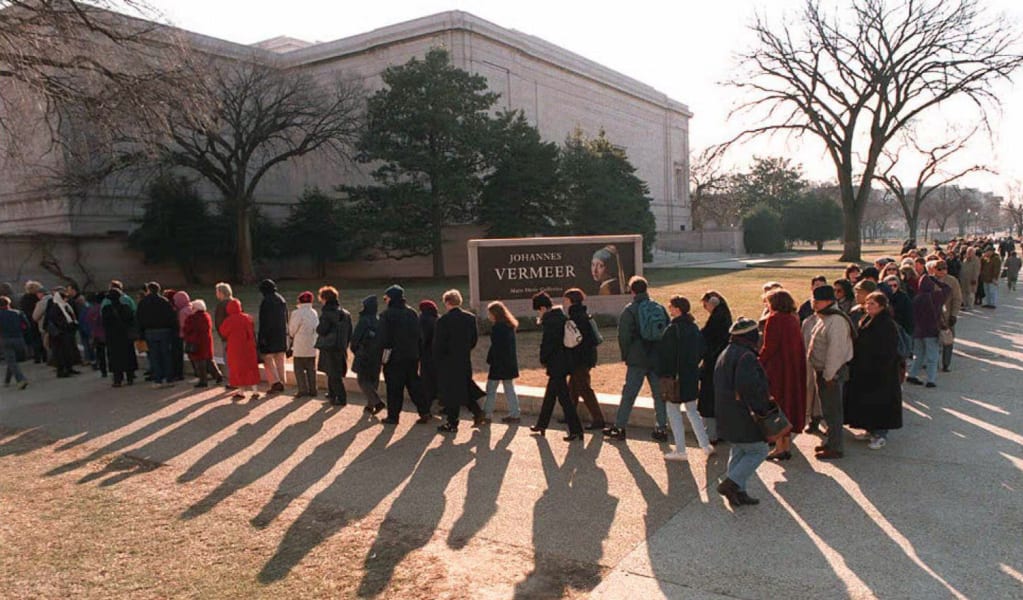Share
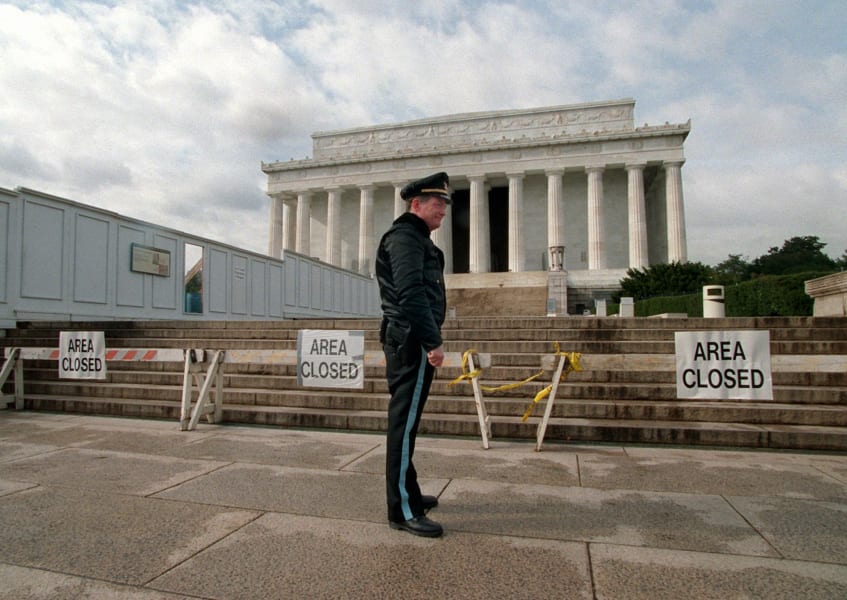

1 of 18
A Park Service police officer stands guard in front of the Lincoln Memorial during a partial shutdown of the federal government in November 1995. Many government services and agencies were closed at the end of 1995 and beginning of 1996 as President Bill Clinton battled a Republican-led Congress over spending levels. Charles Tasnadi/AP/FILE
An employee hangs a sign on the door of the Smithsonian's National Air and Space Museum in Washington on November 14, 1995, marking the start of the government shutdown. Doug Mills/AP
A tourist peers out a ferry window at the Statue of Liberty on November 14, 1995, as a small group of visitors wait on the dock to board the vessel. No passengers were allowed off the boat as both the Statue of Liberty and Ellis Island were closed after federal workers were sent home. Adam Nadel/AP
Sen. Pete Domenici, R-New Mexico, chairman of the Senate Budget Committee holds up a chart showing the differences between Republican and Democratic budgets as Speaker of the House Newt Gingrich, left, and Senate Majority Leader Bob Dole stand by during a press conference on Capitol Hill. RICHARD ELLIS/AFP/Getty Images
A police officer walks through the empty Statuary Hall in the Capitol on November 15, 1995. Joe Marquette/AP
The national debt clock in New York is stopped during the government shutdown in November. Evan Agostini/Liaison/Getty Images
President Clinton speaks about the federal budget impasse from the Oval Office on November 16, 1995. The first part of the budget shutdown ended on November 19 when a temporary spending bill was enacted. But Congress failed to come to an agreement on the federal budget, leading to a second shutdown starting December 16. J.Scott Applewhite/AP
UPS workers deliver letters to members of Congress on November 28, 1995. The letters were written and sent by members of the Coalition For Change, a nonpartisan organization devoted to balancing the budget. Brad Markel/AP
A speaks to demonstrators at the Capitol Rotunda on December 7, 1995. Evangelical leaders from around the country held a prayer session to call on legislators to treat the poor justly during welfare reform and budget negotiations. Doug Mills/AP
House Appropriations Committee Chairman Rep. Bob Livingston, right, holds a "closed" sign outside the National Gallery of Art in Washington on December 18, 1995. Doug Mills/AP
A security guard informs people that the passport office is closed at the Federal Building in Los Angeles on December 18, 1995. Nick Ut/AP
Rep. John Boehner dumps out coal, which he called a Christmas gift to President Clinton, during a news conference about the federal budget on December 21, 1995. Denis Paquin/AP
Karen Bishop chains herself to colleagues during a rally at the Federal Building in San Francisco on January 3, 1996. The workers claimed they were in servitude to the government as hundreds of thousands of federal employees were either furloughed or had to work without pay. Susan Ragan/AP
Food service employees at the Veterans Hospital in Miami line up to receive food rations on January 3, 1996. Many federal employees faced financial hardships during the shutdown. Daniel Portnoy/AP
Tourists line up outside the National Gallery of Art in Washington on January 5, 1996. It was one of the few government buildings open during the shutdown thanks to the assistance of private funds. JOYCE NALTCHAYAN/AFP/Getty Images
People trying to apply for visas at the U.S. consulate in Paris on January 5, 1996, are told that the building is closed because of the U.S. budget crisis. Laurent Rebours/AP
Rep. Thomas Davis III, R-Virginia, attends a rally in Washington on January 5, 1996, urging the end of the government shutdown. Dennis Cook/AP
Tourists view Yosemite National Park in California after it re-opened on January 6, 1996. Early that morning, President Clinton signed Republican-crafted legislation to restore jobs and provide retroactive pay to government workers while he and Congress continued negotiating how to balance the federal budget. Thor Swift/AP

